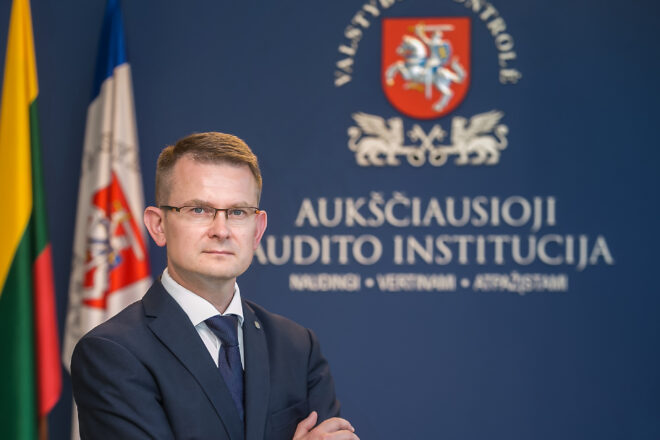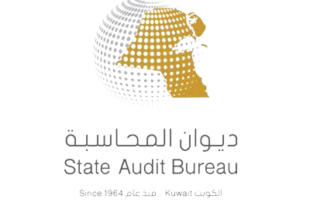Good Governance: A Look Into The Free-Riding Phenomenon

by Arunas Dulkys, PhD, Auditor General, National Audit Office of Lithuania
Once upon a time in the Bulgarian city of Gabrova, the renowned capital of humor, each citizen agreed to bring a bucket of good wine, pour it in one large barrel, and present it as a gift at the city’s festival. When the first ladle of the festive wine was tasted, it was apparent…the barrel held nothing but pure water.
Some citizens do not contribute to the common public good. This global phenomenon, free-riding, is widespread, often manifesting itself in several forms, such as not voting in elections or evading taxes. States themselves may also be guilty of free-riding (when not paying proportional contributions to help solve international problems yet still reaping the benefits of positive outcomes).
Is free-riding really detrimental to anyone? Undoubtedly, yes. And, the higher the level at which free-riding occurs, the greater its destructive power. Mistrust forms a breeding ground for free-riding, which makes maintaining the social contract between citizens and the State next to impossible. While deliberate free-riding is easy to pinpoint, less obvious free-riding can occur when incomplete or partial information exists. This information gap leads to uninformed decisions, thus turning the information age into the age of disinformation.
For example, national budget decisions based solely on revenue and expenditure cash flows (without analyzing net asset values) can be problematic, as these figures do not demonstrate true worth. This beckons the questions, “Are the right decisions being made? Do we really know our State?”
Perceptions and attitudes toward the State differ—some see it as a problem rather than a problem-solver. Others recognize its potential positive economic role. Despite varying views, a survey commissioned by the National Audit Office of Lithuania (NAOL) and conducted by Vilmorus, a Lithuanian-based market research company, indicated citizens believe there is a clear need for the State (90% of respondents selected “need” or “partial need” on the survey). Additionally, nearly 60% felt, to the extent possible, they personally contribute to State-building.
Knowledge on how the State spends tax money also differs. Approximately one-half of the survey respondents believed the most significant share of public funds were allocated to security and defense, and a much less sizable portion was used to administratively maintain the State. In reality, security and defense received the smallest allocation. The largest sum (roughly 70%) was set aside for public welfare, including education and health care.
This lack of awareness demonstrates an information disparity that shapes public perception and potentially discourages willingness to contribute to the common public good. People are more likely to support the common cause if they feel the contribution is fair, honest, and equitable (everyone else is doing the same). Therefore, examining several examples from public audits about what is known, and, perhaps more importantly, what is unknown, is essential to creating an environment that encourages participation and discourages free-riding.
Public Projects. Every year, hundreds of new projects are launched without assessing how many have already begun, and sometimes that same amount are brought to a standstill, resulting in postponed implementation deadlines and frozen funds (figures nearing €230 million in 2015). To date, about a third of the projects have dragged on for over a decade, and the approximate value of those launched but not completed is approaching €10 billion.
State-Owned Real Estate. Records concerning State-owned real estate are equally as controversial. While real estate amounts to more than 10 million square meters, truly objective figures are non-existent primarily due to varying formulas used for calculation (sometimes real estate is divided by total number of public sector staff; sometimes it is divided by the number of civil servants—a figure eight times smaller). The business world is surprised. The public is outraged. In reality, nearly 80% of State-owned real estate bears no direct relation to public sector working conditions, and most of it is low-value structures.
Education. An NAOL audit on general education published last year revealed a nationwide average of 34% of families employing private tutoring services for school-aged children. In larger cities, this practice is more frequent (upwards of 40%). Why should people entrust their taxes to the public education system if learning is outsourced to parallel shadow schools?
Practical Training Centers. In recent years, 42 sectoral practical training centers have opened. They are important, and no one doubts their relevance. The centers, furnished with state-of-the-art equipment, represent a €120 million investment, and, so far, the extent of training in most centers has not reached even half of the planned hours (one center has conducted no training at all). Public auditors have questioned additional proposals to allocate €50 million for further infrastructure development of these seemingly underused resources.
Health Care. Life expectancy in Lithuania is the shortest of all European Union (EU) countries (six years behind the EU average). What does this suggest? That we don’t provide enough treatment? That the quality of treatment is poor? On the contrary, we are ranked second in the EU when it comes to hospital bed availability. We have more doctors than the EU average, but we do not have standard procedures to handle treatment for 80% of diseases. Moreover, we do not record 60% of the adverse side-effects, making it impossible to learn from mistakes. We buy tons of expensive medical equipment, but 59% of it is not fully utilized, and 7% is not used at all. A majority believe the primary health sector problems stem from long queues and waiting lists.
Telecommunications. Electronic communication networks in Lithuania account for approximately 20,000 kilometers of physical infrastructure. Over the last four years, some €40 million was spent on infrastructure development, while an additional €30 million has been earmarked for maintenance. No single organization is responsible for coordinating national network development, which may account for the duplication of an estimated 4,000 kilometers of physical infrastructure. Until 2020, an additional €90 million has been planned for infrastructure development.
Business Oversight Authorities. Very little is known. Today there are 56 such authorities; however, not one government report includes any activity analysis, extent to operational efficiency, or costs. Preliminary estimates show business oversight annually receives an estimated €230 million from the budget. The exact figures remain unknown. In this context, it is not surprising to hear dissatisfied rumblings on contributing tax money to funding such activities.
What if no one paid taxes anymore? Was it worth talking about free-riding at all? When too little time and attention is given to facts and the conceptual discussion of public problems, the threat of mistakes in strategic decision-making increases. These mistakes are followed by huge expenses. Facts can be boring and often difficult to understand and remember. Facts can be unattractive. Facts can be threatening, as they summon the need to take responsibility. Balancing the needs of “me” and “us” is crucial to improving the quality of life, which requires uniting the public and private sectors.
In asking how well we know our state and seeking answers to that question, it’s not just a quest for numbers. Its what we do once we have that data. Far from merely showing how Lithuanian funds or assets are managed, this article sheds light on free-riding by illustrating instances where disinformation impacts the ability to make informed decisions, which, in turn, hinders our ability to exercise good governance and creates a State that is not sustainable.
If the State finds itself filled with 100% free-riders, there will be 0% State left.





